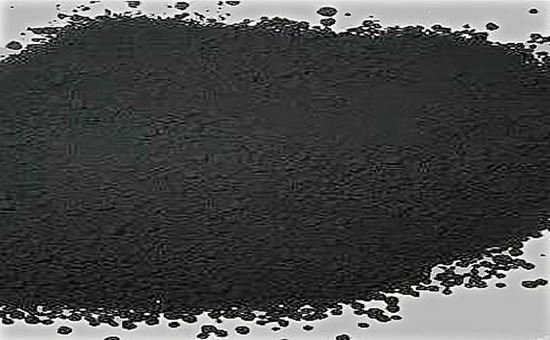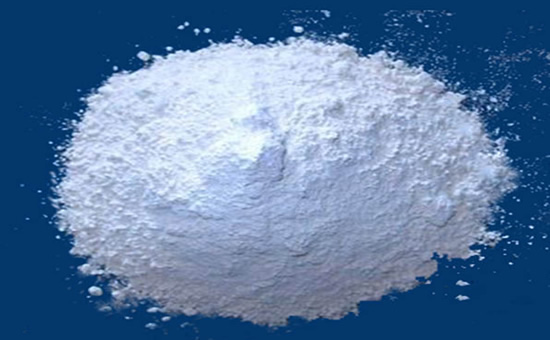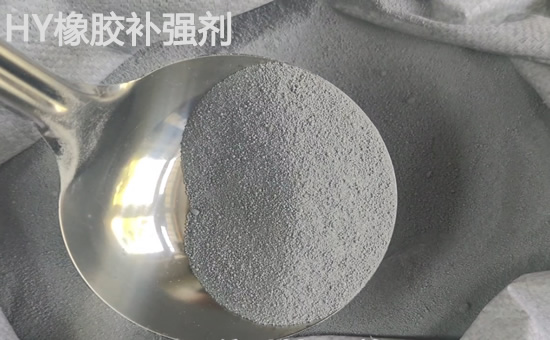Regenerated rubber reinforcing agent is a substance that can enhance the mechanical properties and durability of rubber. Common recycled rubber reinforcing agents include:
1. Carbon black: Carbon black is a black powder that can increase the hardness, wear resistance and weather resistance of rubber.
2. Silica: Silica is a white powder that can improve the hardness, wear resistance and durability of rubber.
3. Metal oxides: such as zinc oxide, magnesium oxide, etc., can increase the hardness and durability of rubber.
4. Vulcanizing agent: The vulcanizing agent can promote the crosslinking reaction of rubber molecules and increase the strength and hardness of rubber.
5. Glass fiber reinforcing agent: It can enhance the strength and rigidity of reclaimed rubber, and improve its heat resistance and corrosion resistance.
6. HY reclaimed rubber reinforcing agent: It is specially used for reclaimed rubber. The reinforcing effect is slightly worse than that of carbon black, but the price is lower and economical.
Different types of rubber reinforcing agents have different applications in rubber products, and the appropriate reinforcing agent needs to be selected according to the specific situation ES5YY19.

As an important rubber filler, carbon black can significantly improve the strength, hardness, wear resistance, aging resistance and other properties of rubber. Here are some ways to add carbon black to increase the tensile strength of rubber:
1. Appropriately increase the amount of carbon black used: the more the amount of carbon black used, the higher the tensile strength and hardness of the rubber.
2. Choose the right type of carbon black: Different types of carbon black have different effects on the properties of rubber. Choosing the right type of carbon black can improve the tensile strength of rubber.
3. Optimizing the dispersion of carbon black: the better the dispersion of carbon black, the higher the strength of rubber, so mechanical mixing, high-speed dispersion and other methods can be used to optimize the dispersion of carbon black.
It should be noted that excessive addition of carbon black will reduce the processability and low temperature resistance of rubber, so it is necessary to reasonably control the amount of carbon black used.
Silica is a commonly used recycled rubber filler, which can improve the tensile strength, hardness, wear resistance and aging resistance of rubber. The following are several ways to increase the tensile strength of rubber:
1. Select the appropriate size and shape of silica particles: Smaller silica particles can increase the tensile strength and elastic modulus of rubber, while larger particles can increase the hardness and wear resistance of rubber.
2. Control the amount of silica: An appropriate amount of silica can increase the tensile strength of rubber, but excessive silica will harden the rubber and reduce its tensile strength.
3. Add heat-resistant stabilizer: silica will decompose at high temperature, resulting in a decrease in rubber properties. Therefore, adding a heat-resistant stabilizer can improve the high-temperature resistance of rubber, thereby increasing its tensile strength.

Zinc oxide mainly improves the tensile strength of recycled rubber through the following three aspects:
1. Cationic crosslinking. Zinc oxide releases Zn2+ ions in rubber, reacts with rubber active groups to form ionic bonds, forms a cross-linked network, and improves strength.
2. Filling effect. Zinc oxide particles are filled in rubber to enhance its resistance to tensile deformation, increase density and strength. But overfilling will reduce fluidity.
3. Interface enhancement. Zinc oxide adsorbs or reacts with rubber to form a strong bond at the interface, which can effectively transmit external force and improve the overall strength. Its large surface area also enhances the rubber's tear resistance.
In summary, zinc oxide enhances the tensile strength and mechanical properties of rubber in multiple aspects and at multiple levels through the synergistic effect of crosslinking, filling and interface strengthening. Its dosage and dispersion are critical and should be strictly controlled according to specific requirements.
Sulfur improves the tensile strength of recycled rubber mainly through two aspects:
1. Vulcanization and crosslinking. Sulfur reacts with rubber double bonds to form a three-dimensional cross-linked network that enhances strength and elasticity. High degree of vulcanization, high crosslink density, high strength and low elongation.
2. Spatial grid structure. The three-dimensional cross-linked network strengthens the spatial grid structure, resists external forces, and improves tensile strength. Uniform and compact structure, high strength.
Vulcanized rubber is chemically stable, and the molecular chain is not easy to slip; cross-linking breaks during stretching to generate molecular chain regeneration, which enhances toughness and recovery; residual sulfur produces stress concentration and increases strength.
Glass fiber is a high-strength, high-stiffness composite material, and mixing it with rubber can increase the tensile strength of recycled rubber. Specific methods include: cutting glass fibers to appropriate lengths and mixing them with rubber, or weaving glass fibers into a grid, and then coating the rubber surface. In addition, the properties of the rubber can be adjusted by controlling the content and length of glass fibers to achieve the best tensile strength. It should be noted that in the process of mixing and processing, care should be taken to protect the glass fiber from damage to ensure its improvement of rubber performance.

HY reclaimed rubber reinforcing agent is a new type of reclaimed rubber strengthening agent developed by Hongyun. The price is more than 1K per ton. Its physical and chemical properties, its strength, hardness, wear resistance, aging resistance and other comprehensive properties can achieve the purpose of improving the performance of reclaimed rubber materials. It can increase the vulcanization strength of reclaimed rubber by 1-3 MPa and improve the wear resistance and aging resistance of rubber products. Due to the current high price of carbon black and the low cost of products using reclaimed rubber, cheap materials are mostly used, and reclaimed rubber reinforcing agent has become the first choice.
No matter what kind of recycled rubber reinforcing agent you choose, you need to pay attention to the following aspects:
1. Dosage selection. The selection of the amount of reinforcing agent is very important. Excessive amount will have negative effects and affect the original properties of rubber, while too little will not be able to exert its due effect. The selection should be made according to the type of rubber, formula composition and production requirements.
2. Dispersion. The reinforcing agent needs to be uniformly dispersed in the rubber matrix, otherwise it will aggregate and affect the strengthening effect and rubber properties. It is necessary to choose a suitable dispersion method and process to improve its dispersion performance.
3. The interface strength with rubber. The interface strength determines whether the external force and stress can be effectively transmitted, and directly affects the strengthening effect. It is necessary to select appropriate methods or additives to improve the interfacial adhesion and compatibility of the two.
4. Add method and period. Different reinforcing agents have different best adding methods and periods. It is necessary to select the most suitable addition method and period according to their respective properties and reaction mechanism in order to exert the best strengthening effect.
5. Compatibility. Different types of reinforcing agents also have certain compatibility problems, and their coexistence may produce chemical reactions or interfere with each other, affecting their respective strengthening effects. Compatibility of different fortifiers needs to be assessed to avoid incompatible sharing.
6. Weather resistance. Both the reinforcing agent itself and its existing form in the rubber need to have good weather resistance and chemical stability, otherwise it will fail rapidly with time or changes in environmental conditions, and cannot exert the strengthening effect for a long time.
7. Toxicity and others. The reinforcing agent should not release waste gas and residues that are harmful to the human body, and needs to be relatively harmless. And it will not have other negative effects on processing equipment and products.
The selection and use of regenerated rubber reinforcing agents requires consideration of complex factors, not only involving its chemical properties and strengthening mechanism, but also closely related to the specific rubber formula, processing technology and service conditions. Only when the system is managed and controlled on the basis of comprehensive analysis and evaluation can its reinforcing effect be exerted to the maximum without other negative effects.
Exclusive original article [commercial authorization] reprint, excerpt and excerpt in any form are prohibited without written authorization. Focus on Hongyun rubber: learn the process formula and raw material technology of producing rubber products from recycled rubber to help you reduce costs and increase profits